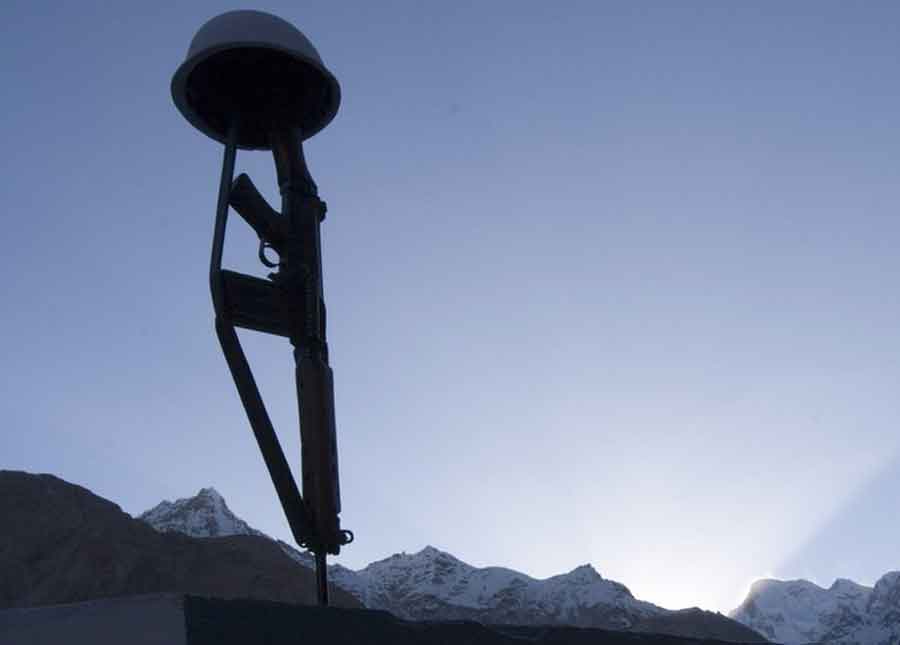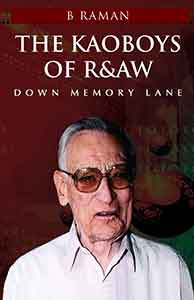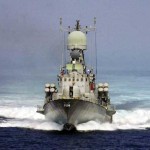Whatever cooks in North and South Blocks, some scents have the tendency to seep through the walls no matter how tight the windows are shut. So one fine day comes this article that the government is planning to shortly appoint Army Chief, Gen Bikram Singh as Permanent Chairman of Chiefs of Staff Committee (PC COSC) and the present Chief of Integrated Defence Staff to the Chairman, Chiefs of Staff Committee (CISC), Lt Gen Anil Chait will be elevated to Army Chief.
…government has no right to take such decision without discussion with all political parties because hasn’t for years the decision to appoint a Chief of Defence Staff (CDS) been pended on these very grounds?
It is not known what facts this article is based on or if it is mere perception building exercise, since the same author was earlier engaged in perception building for India to vacate Siachen, though till appointed on the Indian Track II Team to discuss Siachen with Pakistani counterparts, he was vocal on TV against vacating Siachen citing national security. That apart, the article sure set discussion in Delhi’s elite club afire – permutations and combinations, you name it: that the author with his Armoured Corps background was playing up Anil Chait, not that the latter needs any propping up; that with uncertain outcome of elections and Bikram retiring May 2014, he was being appointed PC COSC now (next best to doubtful Governorship) to serve till 64 years age, since he and Prime Minister Manmohan Singh’s family are related – even though Bikram had reportedly denied such relationship earlier; that the article is bunkum as it is the Air Chief, Air Chief Marshal NAK Browne who is being made PC COSC; that government being in its last throes is incapable of taking any decision, and; that government has no right to take such decision without discussion with all political parties because hasn’t for years the decision to appoint a Chief of Defence Staff (CDS) been pended on these very grounds?
But this is not about who gets appointed as PC COSC or the next Army Chief. This is about the post of PC COSC itself, how it would help the military and in promoting civil-military relations, which the aforesaid author terms as “win-win situation”. Interestingly, in the immediate aftermath of this article came the National Security Lecture on 6th December 2013 at the United Services Institution of India, New Delhi, delivered by Shri NN Vohra, Governor of J&K on ‘Civil-Military Relations’. The issue of civil-military relations has its relationship to considerable extent with appointment of a PC COSC. This becomes clear when viewed in the backdrop of the synergy required within the military in particular and national synergy in general since 21st century threat and asymmetric wars are hardly targeted at or can be fought by the military alone. This would have been apparent to the audience that attended Governor Vohra’s talk and his references to the lack of military synergy and the enlarging threats that India faces. In his talk, Governor Vohra pointedly remarked that the type of military integration that was needed had unfortunately not been ensured by HQ Integrated Defence Staff (IDS). One can say that with respect to integration of the three Services, the Governor was being rather modest. The fact of the matter is that there is hardly any integration worth the salt. Putting budget projections together hardly constitutes integration.
The fact remains that no matter what façade of Services jointness and integration, it simply has not come about despite HQ IDS having been in place for over a decade. If former Army Chief, General VP Malik said, “It is not my case that the Service Chiefs do not cooperate in war. Were they not to do so, it would be churlish. But in war cooperative synergies are simply not good enough.” Much later, a Service Chief stated during the Unified Commanders Conference that the Services had very good synergy since all three chief played golf together once a month followed by breakfast. Not much has changed since and changes made are largely cosmetic, even though the establishment of HQ IDS is being hailed as a major step, and next the appointment of PC COSC is already being portrayed as a win-win situation. Amidst the hullabaloo of the military becoming a network centric force, presently the military does not even have common data structures, symbology and interoperable protocols. Radio communications are not interoperable to desired degree and radio sets differ in frequency bands, wave forms and secrecy algorithms. There is absence of knowledge management and a common unifying secrecy algorithm for the Services hasn’t been developed though technological solutions exist. No common enterprise GIS has yet been developed either.
If the next government is serious about national security and synergy both at the national and military levels, an important task would be restructure the MoD and HQ IDS, merging them completely and institutionalizing their interfaces with MEA and MHA.
The Defence Intelligence Agency (DIA) is the central repository for all intelligence inputs pertaining to the three Services including Imagery Intelligence (IMINT) and Electronic Intelligence (ELINT), however we are yet to integrate the aspects of topography with the DIA. Within the existing setup, adequate resources in terms of remote sensing, ELINT payloads and cartography are not available to produce high quality fused data. Similarly, much more is required at the national level in terms of integration of various government agencies. Military Survey is some 30 years behind in meeting even existing routine mapping requirements of the Military, whereas Large Scale Mapping requirements of say 1 : 5,000 and below is practically not being met at all, which are vital to Operational Information Systems being introduced into the Army. Technology, policies, standards and resources are necessary to acquire, process, store, distribute and improve utilization of geospatial data for military purposes. The need to establish a Defence Spatial Data Infrastructure (DSDI) is not even being talked about. Project Defence Communications Network (DCN) hailed as project to usher integration, does ‘not’ include development of common software.
But the important question is that can one really blame HQ IDS for the lack of integration within the military? A closer examination would tell you no. The whole concept of HQ IDS was based on its complete integration with the MoD, which has not happened. You can’t post an officer each from IAS and IFS to HQ IDS, similarly, an odd military officer to MoD, and call it integration. Members of the US contingent who came to attend the first Indo-US Defence Planning Group (DPG) meeting in New Delhi post 9/11 were aghast to learn that our MoD has no military officers on permanent absorption or deputation, their surprise writ in the question, “How can you possibly function like this?” But HQ IDS has come up akin to a separate Service HQ.
The bureaucracy has ensured that this integration did not take place for many reasons, major one being money and corruption aside from why disturb bureaucratic bliss of authority but sans responsibility. Gen VK Singh, former Army Chief reveals in his book the corruption trail going right up to the PMO. Obviously, the Defence Minister presides over the rot and little wonder that despite scores of scandals in defence procurements, no bureaucrat has ever been indicted or punished. Merger of HQ IDS with MoD would bring in accountability but more importantly, affect the money chain and skeletons may come tumbling out. Post the talk by Governor Vohra, there was discussion about increasing cross postings between the MoD and military but suffice to say an odd increase in cross postings does not constitute the degree of integration that is required. If the next government is serious about national security and synergy both at the national and military levels, an important task would be restructure the MoD and HQ IDS, merging them completely and institutionalizing their interfaces with MEA and MHA.
Indian politicians and bureaucrats have consistently displayed a penchant to appoint committees and run affairs through them rather than go for institutionalized set ups. But we need to seriously examine if can afford to continue with the apex of the military in a ‘committee’, call it COSC or whatever. Try replacing the post of Chief of Army Staff with ‘Chairman Army Commanders Committee’ and witness how you kill that organization. Same is the case with PC COSC. Anyone who has served in HQ IDS, will tell you that military synergy is only ‘within’ HQ IDS and the Services HQ listen little to them.
Governor Vohra stated that he would expect the PC COSC to be the single point military advisor to the government but the fact is that PC COSC will be no more than another embellishment as far as MoD is concerned, for the rug has already been pulled from under his feet. Not many would know that even the document dealing with CDS has been so craftily drafted by the bureaucracy that the CDS really will hardly ever be a single point advisor. The document says that as and when a CDS is appointed, he will have equal voting rights as Service Chiefs and in case of disagreement by two Service Chiefs, arbitration will be done by MoD. Even before HQ IDS came into being, did we have the arrangement that Services HQ were required to append dissent notes by Army Commanders / FOC-in-Cs / AOC-in-Cs ? So why this provision in case of CDS ? If there are differences of opinion, these are for discussion within the military (as done by Service Chiefs in respective Service) but eventually one single case is sent to MoD. It is time the bureaucracy sheds its policy of divide and rule or the political authority kicks them into shedding it.







The need of the hour is to appoint a CDS (5 start General), who will be sole Military advisor and commander of all defence forces, i.e. all the services and unified commands. A deputy CDS (Equivalent to General/Admiral/Marshal) should also be appointed. He should lead all the integrated commands. India should be divided into 5 theater commands i.e. North, South, East, West and Central. The theater commands should be headed by an officer of the rank of Vice Chief. They should report to the Deputy CDS. The services can have multiple commands under a theater command, but not overlapping into 2 theater commands. India should also start 3 international commands i.e. Central Asia, West Asia and East Asia to secure our interests. 3 other Vice Chief rank offices should also be appointed to head functional, support and administrative commands. The functional commands should have Strategic, Special Forces, Aerospace, Communications, Intelligence, International Relations, Logistics and Cyber commands under it. The Support commands should have R&D, Production, Medical Services, Procurement, Policy & Planning, Public Relations, Recruitment and Training, Psychological ops and Defence security corps under it. The Administrative Command should have Finance, Veteran Affairs, Real Estate, Legal, HR (for existing service men & women) & Military police under it. The bureaucrats should be moved out of MoD. The MoD should be militarized on a war footing, if India has to win a multiple front military conflict with China and Pakistan as the main adversaries and Sri Lanka, Nepal, Bangladesh, Saudi Arabia, UAE, etc as other adversaries.